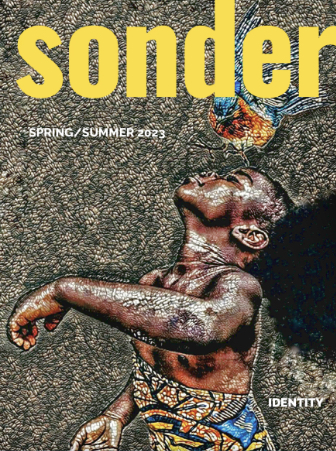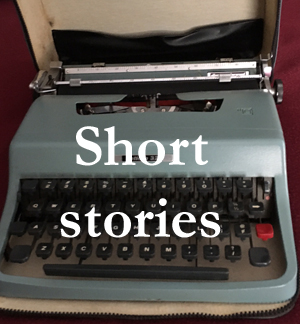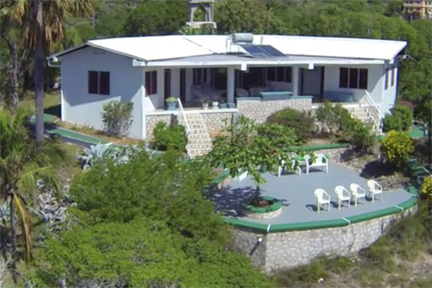Extraordinary
James decided on his eighteenth birthday that he would no longer respond to “Jim”. He had spent the day driving aimlessly around town in his second-hand gray Toyota imagining things that might separate him from ordinariness, and the first name thing came to him: A useful first step.
“This is James Allen,” friends should henceforth say in introducing him at parties. “James, not Jim, please.” People who that night also met Pete or Joe or Hal might not remember them, but they would remember James Allen, and someday think of him when they needed important things done, unusual things. Extraordinary things. Substance might follow form.
“James, not Jim, please.” People who that night also met Pete or Joe or Hal might not remember them, but they would remember James Allen, and someday think of him when they needed important things done, unusual things. Extraordinary things. Substance might follow form.
To reinforce the message, he bought a paint kit and changed the Toyota’s fenders from gray to electric blue. Even from a block away, the car was unmistakable. People would identify that car with James Allen.
In the ensuing decade, though, his life continued to be depressingly humdrum: He took courses at the community college, got a job as a bank teller, met the co-ed who became his wife, bought a house with a white picket fence and began a family, a boy and a girl. He nonetheless never abandoned his ambition to escape the unexceptional. When the time came for a newer used car, he had its fenders, too, painted electric blue.
And then one Saturday morning he was pleased to find on his doorstep a stranger who could only have come to see this unusual fellow who insisted on being called by his full and proper name. Having had a look, the man beat a hasty retreat with an improbable alibi that piqued James’ curiosity. It was the sort of doorstep observation, he mused later, that the FBI might employ in vetting a candidate for an important post.
This is how it went: He had come to the door to see what FedEx had brought. The deliveryman routinely left James’ packages on the front porch, rang the doorbell and went on to his next stop. By the time James got downstairs, the truck was always long gone.
This morning the doorbell rang twice, the second time just as he reached the foot of the stairs. Opening the door, James found himself face-to-face with the maybe-FBI man, in jeans and a sweat jacket whose official-looking lettering was obscured by a bright blue windbreaker. A FedEx package was at his feet.
James wished that before opening the door he had put on his dress Stetson, as if on his way to something important. The hat had a memorably wider brim than most Easterners wore. “Hello,” he said. “What are you . . . .” He stifled that opening, wanting to make clear he was someone who took unusual happenings in stride, and began again. “Can I help you?”
“Oh, thank you,” said the man. He stepped back to glance beside the door at the house number, in the great looping brass numerals James had bought for their originality. “I’m looking for 324 Buckingham Street. I have the right number, but maybe this isn’t right.”
“No,” James said, “you’re on Edgewood Street. Buckingham is almost downtown.”
“I’m sorry. Can you point us in the right direction?”
James realized there was a car in the driveway, a second man behind the wheel. “It’s almost two miles. I’d go to the end of the block here and take a right onto East Main. After about a mile, when you cross Evergreen – perhaps the fifth or sixth traffic light — you ought to stop and ask someone. You’ll be near.”
“Got it. Thanks.” The man walked to the driveway, spoke through an open window to the man driving – relaying James’ instructions, no doubt — then walked around to the passenger-side door. They backed out of the driveway and headed off in the direction James had suggested.
He mentioned the incident to Susan when she got home from grocery shopping with the kids. “Something quite unusual happened while you were away,” he said. He described the encounter. “Someone had sent that man to look me over. To see if I was rattled to find a stranger on the doorstep. I can’t wait to see what happens next.”
“Oh, James!” she sighed. It was a tone she used from time to time, which he understood as acknowledging one or another of his extraordinary qualities.
For the next few days he declined to stifle his cell phone in places and on occasions where one normally did so, but neither the maybe-FBI man nor anyone else called.
“Oh, look!” said Susan at the breakfast table one morning. “It’s a good thing you came to the door the other day. We might have lost the package.” She thrust a newspaper page at him.
Thieves had begun following delivery trucks, the article said, pulling in at random to see if anyone came to the door where packages had been left. If not, they came up and rang the doorbell. “If still no one comes, they grab the package and skedaddle,” a police spokesman was quoted. There seemed to be more than one pair running this scam. Two or three. “We need the public’s help to catch these guys.”
Susan did not mention his earlier theory about the man who had come to their door, so James did not have to revisit that perhaps-mistaken idea. Rather, he saw an opportunity to make a difference, because he was expecting another package soon. He set out a pad and pencil by the front door, and spent a few minutes practicing taking pictures with his phone. He also went online to look up and memorize the e-mail address of the police department’s tip line.
So he was ready when late the next day, soon after he got home from work, the doorbell rang. He listened as the delivery truck went down the block, and sure enough, the doorbell rang again. James glanced to be sure the pad and pencil were ready, and opened the door.
It was a different man, and a different car, but was almost surely the same scam. “Can you help us?” the man said. “We’re looking for Alexander Street.” The man wore a gray jacket that looked almost like a uniform, but James was sure it wasn’t.
“You’re off the mark,” he said coolly. “What’s your name?”
The man appeared flustered. “Jones,” he finally managed. “Sorry to bother you.” He backed away, turned and started down the porch steps.
Taking his phone from his pocket, James snapped a photo of the man getting into the car, then zoomed in for an excellent photo of the license plate just as the car was about to back hastily down the drive. Taking the pad, he jotted a few notes to prompt memory: faded tan, rusted chrome trim; an absolutely ancient four-door sedan, an Oldsmobile—a brand no longer made. Before the car was out of sight down the street, he had sent the photos to the police tipline. Then he phoned.
“This is James Allen,” he told the receptionist, “on Edgewood Street. I’ve just had a visit from the kind of scam that was in the paper yesterday. I’ve sent a photo of the criminals’ car and license number to the tip line, and I have other details. Can you transfer me to someone who’s working on this case?”
In a moment he was talking to a detective, who was evidently pleased. “Thank you for the photos; I have them on my screen. How long ago did they leave?”
“Two or three minutes ago. Headed south on Edgewood Street.”
“I’m not sure I recognize the make of that car,” the detective said.
“You’re too young,” James said. “It’s an Oldmobile Alero. They stopped making them, I’ll bet more than a decade ago.”
“Hold a moment, please.” James heard the detective call the dispatcher. “Put out a bulletin.” He gave a description of the car and the license plate, and then came back on the phone. “With that unusual make and your photos, we ought to be able to nab them. Could you identify the man who came to your door?”
“I think so. You can see I took his picture before he got in the car.”
“Sir, you’re a remarkable man and an alert citizen,” the detective said. “We could have an arresting officer bring them to your house for positive identification, but then they’d know for sure who turned them in and where you live. Might you come to the station?”
“Of course. Phone me when you’ve caught them. I’m only ten minutes away.”
He had barely started telling Susan about his adventure when the phone rang. “We have them,” the detective said, “thanks to you. Could you come to the station?”
“You bet.” James shortened his explanation to Susan, put on his coat, and was on his way.
The detective was waiting outside the station. “Mr. Allen?” he said through the car window.
“Yes.”
“I know you!” he said. “I’ve seen your car around town. Love your color scheme! Park over here in the VIP spot, please, and we’ll have you identify the car.”
James parked, got out, and looked at the car parked next to him. An ancient tan Alero sedan. “That’s the one, officer. Not many like it.”
“Wonderful!” said the detective, writing something in a notepad. “With no prompting from me. A rock-solid ID. You’re a perfect witness. Come into the station, please.”
Perfect witness. The phrase lodged itself firmly in James’ memory.
He was led to small room with a chair facing a small window looking into a much larger room. There were a dozen people in that room, most seated on plain wooden chairs. James spotted the man who less than an hour ago had been at his door. He shrank from the window.
“No need to duck, sir. It’s a one-way mirror,” said the detective. “Did you think you recognized someone?”
“Yes,” said James, but was interrupted by a knock on the door.
The detective let a young man into the room. “Mr. Allen,” he said, “this is Buddy Goddard from the newspaper. If you don’t mind, he’d like to observe, and probably write a news story. We need to encourage more residents to be as organized and observant as you.”
“No problem,” said James, and paused as his mind searched for better wording. “Anything I can do to help the police do their job,” he said. “The public interest is my interest.”
“Thank you, sir,” said the reporter. He scribbled something in a notebook.
“Come back to the window, sir,” the detective said. “Can you see . . . ”
“Unless he’s left the room,” James interrupted, “he’s in there.” He sat down on the chair and peered through the little window. “There! The man on the left, standing by the wall.”
The detective leaned over James’ shoulder. “Tall fellow, gray slacks, gray jacket almost like a uniform?”
“That’s the one. Let me just double-check.” He took out his phone and thumbed through to the photo he’d taken. “Absolutely,” he said. “Not the world’s greatest picture, but enough to be sure my memory is correct.”
“Good man!” said the detective. “Let’s go into a more comfortable room.”
“Can you wait just a minute?” the reporter said to the detective. “My photographer has arrived.” He turned to James. “I’d like to get a picture of you peering through that one-way window,” he said, “if you don’t mind.”
“Glad to be of help,” James said. He’d waited a long time for recognition; a few minutes more was nothing.
Within moments someone else appeared in the doorway. A young woman and a burly man with a video camera on his shoulder. “Susan Scranton from Channel Three,” said the woman. “We’d like to shoot you making the ID through the window.”
The newspaper photographer and the television cameraman obviously knew each other. They worked together to stage a picture of James seated, looking through the window, with the detective over his shoulder. “Can you just point to the culprit, sir?” said the TV fellow.
They had him stay at the window while they moved around the little room to get different angles, and had him point through the window twice more. James complied patiently, all the while thinking what Susan would say when he told her all this. Maybe he shouldn’t tell; just have her watch the Channel 3 news with him tonight, and surprise her.
“Enough!” the detective said at last. “Let’s get this good man into a comfortable chair, and you can do your interview.” He led them out to a larger room, and stood with an arm around James’ shoulders, waiting as the cameras were pointed at them. “This man is a model citizen,” he said. “If every resident of the city were as thoughtful and observant, we could wipe out most of these minor crimes.”
The reporters wanted to ask a few questions. “Why don’t you sit in that comfortable chair? Can I get you a cup of coffee?”
James looked at the offered chair, and sensed he would look small and slouched sitting there. “I’ll opt for that one,” he said, pointing to a hard-backed chair. “And thanks, but I’ll wait to have coffee when I get home.” He sat, and turned to the reporters. “Can I answer any questions?
“Thank you, sir,” said Buddy, the newspaper reporter. “First, can we be sure we have your name right?”
“James Allen,” he said. “That’s A-double-L-E-N. James Allen.” He watched them write in their notebooks. “Not for publication, please, but my special friends,” he added in a tone meant to include them, “call me Jim.”
–End–
First published in Sonder Magazine, Dublin, Ireland, on March 23, 2023





